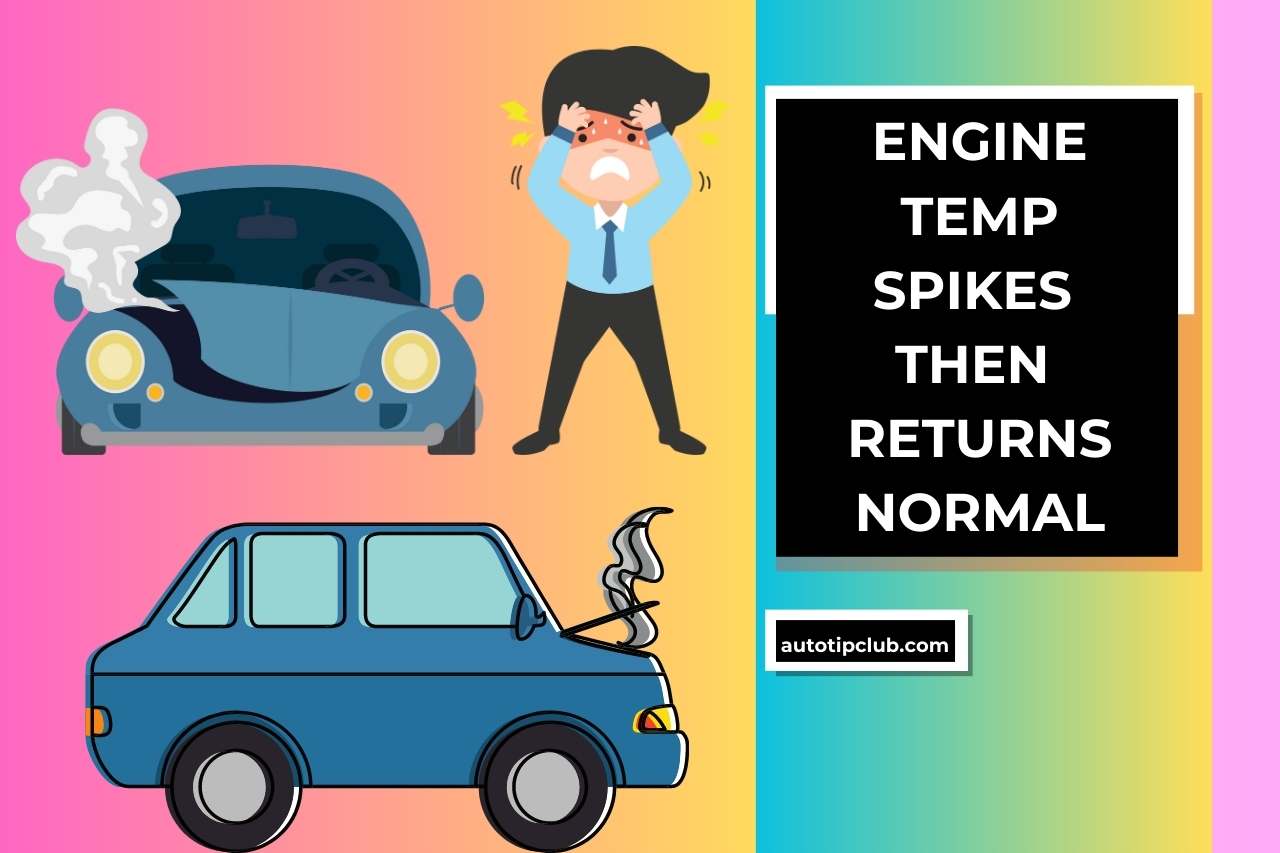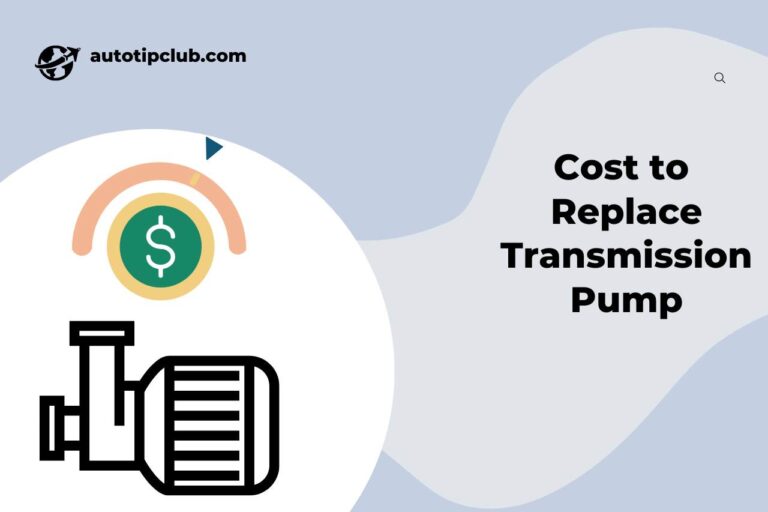Engine Temp Spikes then Returns Normal – Causes and Solutions
Did you experience Engine temp spikes then returns normal? You ought to proceed with caution if you’re encountering this since it might indicate problems regarding the engine, the coolant system, or the air conditioning system.
The underlying causes of automobile temperature spikes will be the subjects discussed in this article, in addition to remedies for the issue that is causing them. All the additional details will also be known to us. So, let’s get rolling!
What is the Normal Car Engine Operating Temperature?
The normal car engine operating temperature typically ranges between 195 to 220 degrees Fahrenheit (90 to 104 degrees Celsius). This is the optimal engine temperature range wherein most vehicles are designed to function efficiently and safely.
What are the Common Causes of Engine Temperature Spikes?
The most common reasons for sudden vehicle engine temperature spikes are malfunctions or inefficiencies within the cooling system and various engine components.
Reasons for Engine Temperature Spikes:
Cooling System Malfunction
This is often the most direct cause of sudden car engine temperature spikes. Components such as the radiator, water pump, or cooling fan may fail or underperform. For instance, a defective fan may not provide adequate airflow, especially during stationary or low-speed scenarios.
Coolant Issues
The quality, level, and mixture of the coolant play a pivotal role. If the coolant is old, improperly mixed (with water), or insufficient in quantity, it might not effectively absorb and dissipate heat.
Thermostat Malfunctions
The thermostat regulates the flow of coolant in the engine. If it’s stuck in the closed position, coolant circulation is hindered, potentially causing the engine to overheat.
Blocked Radiator
Over time, debris or sediment can accumulate inside the radiator, obstructing the flow of coolant and diminishing its cooling capacity.
Driving Conditions
Situations like uphill driving, rapid acceleration, or hauling heavy loads can put additional strain on the engine, resulting in short-lived temperature increases.
Leaky Cooling System
Coolant leaks, either from the radiator or associated hoses, can lead to a reduced coolant level, hindering its capacity to cool the engine effectively.
Air in the Cooling System
Air bubbles in the system can impede the effective circulation of the coolant, leading to hotspots within the engine.
Worn or Damaged Belts
Belts drive components like the water pump. If they’re damaged, slackened, or broken, components may not function, leading to temperature spikes.
Why does Engine Temperature Return to Normal After a Spike?
If your car engine temperature spikes then returns normal, it can happen because of driving uphill, hard accelerated motions, or pulling big loads. These are some of the main reasons that could lead to a brief elevation of the normal engine temp.
These sorts of situations could contribute to the engine’s stress and lead to a brief increase in normal temperature for a car.
The engine temperature might go back to normal after the load is lessened, or the circumstances of driving change when the cooling system catches up and removes the additional heat that is generated. Don’t take car overheating then going back to normal lightly as it can bring you various issues in the long run. We’ll discuss about them later in the article.
How Can a Malfunctioning Thermostat Cause Temperature Spikes?
A particularly significant concern with thermostats is that they frequently become stuck closed. The thermostat malfunctions and does not open at an appropriate temperature, which restricts the free flow of coolant through the engine.
This leads to the coolant being unable to circulate to the radiator to cool it and becomes stuck inside the engine. Heat won’t be adequately dissipated without proper coolant flow, which produces an increase in engine temperature and a temperature spike.
The coolant flow may be partially but not completely restricted by a broken thermostat. The typical rate of flow may be disturbed by this partial restriction, which will end up resulting in less coolant reaching the radiator. As a result, cooling effectiveness declines, and engine temperature rises.
Engine temperature gauge spikes may result from this, especially under conditions of high demand or load. Moreover, irregularly functioning thermostats can malfunction.
They might constantly toggle between open and closed positions, or they could find themselves trapped in a partially opened posture. Any discrepancies in the thermostat’s operation might throw off the equilibrium of the cooling system, leading to fluctuations in coolant flow and temperature control.
Inconsistent coolant flow can cause temperature spikes in the engine. On the contrary hand, a malfunctioning thermostat may not open at the proper temperature or may open more slowly than intended.
The engine may overheat as a result of this delayed opening before the thermostat finally permits coolant circulation.
The thermostat’s inability to react quickly to temperature variations could possibly be an outcome of the delayed opening or the accumulation of mineral deposits.



What are the Potential Consequences of Cooling System Leaks?
Antifreeze, sometimes referred to as coolant, serves as a necessity in regulating the temperature of an engine. Coolant is able to escape from a cooling system leak, causing the coolant level to drop.
Engine overheating brought on by inadequate coolant circulation can severely damage engine parts like cylinder heads, gaskets, and pistons.
Reduced coolant volume may be the result of cooling system leaks. The engine’s cooling system might not be able to effectively disperse heat generated through the engine if there is less coolant available.
This could result in decreased cooling effectiveness and raised operating temperatures. Engine performance can be adversely influenced by excessive heat.
The engine might experience a loss of power, worse fuel efficiency, and worsened overall performance when it operates at temperatures higher than normal as a consequence of coolant leaks.
Why Does a Failing Radiator Fan Contribute to Temperature Spikes?
Usually, is less air flowing naturally to cool the radiator when a vehicle is stationary or travelling at moderate rates of speed, such as in traffic or during extended idle times.
The radiator fan is even more necessary to maintain adequate ventilation in these circumstances. The radiator fan might fail to operate or run at the appropriate rate if it fails, which would result in insufficient cooling during idle or low-speed circumstances.
This may result in sudden increases in the temperature of the engine and temperature spikes. To decrease the temperature of the coolant flowing through the radiator, the air is drawn through it by the radiator fan.
Inadequate airflow over the radiator might result from a radiator fan malfunction or reduced performance.
This lessens the cooling’s efficacy and hinders the radiator’s capacity to adequately release heat. Spikes in temperatures may develop as a result of the engine temperature rising.
How Can Vehicle Temperature Spikes be Resolved?
It’s essential to stop instantly in a location that is secure if you see the temperature gauge starting to rise. Permit the engine to cool down naturally after stopping it. Faster heat dissipation may be facilitated by opening the hood.
Check the coolant level in the coolant reservoir after the engine has had a chance to cool. If it’s low, top it off with the correct coolant combination in accordance with the instructions given by the manufacturer.
Any apparent leaks of coolant need to be noted because they can point to the exact location of the issue. Look for any indications of leaks, cracks, or damage by visually inspecting the cooling system’s parts, including the radiator, hoses, water pump, and thermostat housing.
Furthermore, look for any damaged or loosened belts that could be affecting the cooling fan or water pump’s functionality. Whenever you notice any damaged cooling system parts, which might include a broken thermostat, radiator fan, or water pump, it is recommended that you have these repaired or replaced by a licensed mechanic.
The proper functioning of the cooling system can be recovered by addressing the particular component that caused the temperature spike.
Is it Safe to Continue Driving if the Engine Temperature Returns to Normal?
Yes, if the engine temperature returns to normal and there are no signs of ongoing issues, it is generally safe to continue driving.
However, it’s essential to remain vigilant and monitor your vehicle for any recurring spikes or unusual behavior. Regular maintenance, including checking coolant levels and the cooling system, is crucial to prevent future temperature issues.
If you notice persistent car temperature fluctuations or other concerning symptoms, it’s advisable to have your vehicle inspected by a professional mechanic to address potential underlying issues and ensure continued safety on the road.
Can Extreme Weather Conditions Impact Engine Temperature Stability?
Yes, extreme weather conditions can indeed impact engine temperature stability. You may experience temperature fluctuations due to factors such as:
Cold Weather
In colder temperatures, your engine may take longer to reach its optimal operating temperature, leading to initial temperature spikes.
Hot Weather
High ambient temperatures can strain the cooling system, potentially causing temporary temperature increases.
Heavy Rain or Snow
Driving in heavy rain or snow can affect the cooling efficiency, impacting the engine’s ability to maintain a stable temperature.
How to Reset Temperature Gauge in Car?
To reset the temperature gauge in a car, you typically need to disconnect the vehicle’s battery, wait for a short period, and then reconnect it, which can reset the electronic systems, including the temperature gauge.
Step by step to reset temp gauge in car
- Safety First: Ensure your vehicle is off and in a safe location. Remove the keys from the ignition.
- Access the Battery: Open the car’s hood and locate the battery. It’s crucial to recognize the positive (+) and negative (-) terminals.
- Disconnect the Negative Terminal: Using a wrench, loosen the nut on the negative terminal and carefully disconnect the negative (-) battery cable. It’s essential to start with the negative terminal to prevent any short circuits.
- Wait Period: Once disconnected, wait for about 10-15 minutes. This waiting period allows the car’s electronic systems, including the temperature gauge, to reset.
- Reconnect the Battery: After the waiting period, reconnect the negative battery cable to the negative terminal and tighten it using the wrench.
- Check the Gauge: Start your vehicle and monitor the temperature gauge. It should reset and function normally. If it doesn’t, there might be a deeper underlying issue, like a faulty sensor or a problem with the vehicle’s computer.
- Professional Help: If the gauge doesn’t reset after following these steps, it’s advisable to consult a professional mechanic. They can provide a more accurate diagnosis and fix any underlying issues.
It’s worth noting that disconnecting the battery might also reset other vehicle settings like radio presets or clock time, so you might need to reconfigure them after performing this procedure.
Watch this one,
Video Credits – Auto V Fix
You May Also Like
- AC Off Due to High Engine Temp – Preventing Overheating!
- The Car Temperature Gauge Stays Cold – (Causes & How to Fix It)
- Why is My Check Engine Light Flashing and My Car Shaking?



My name is Robot McCullum, and I’m an Automotive Engineer with 20+ years of experience in the automotive field. I’ll give you step-by-step instructions for recognizing and fixing complicated technical problems in an uncomplicated manner. www.AutoTipClub.com, is your best resource for in-depth tutorials, insightful tips, and practical advice designed and developed either for seasoned vehicle collectors or daily drivers.






